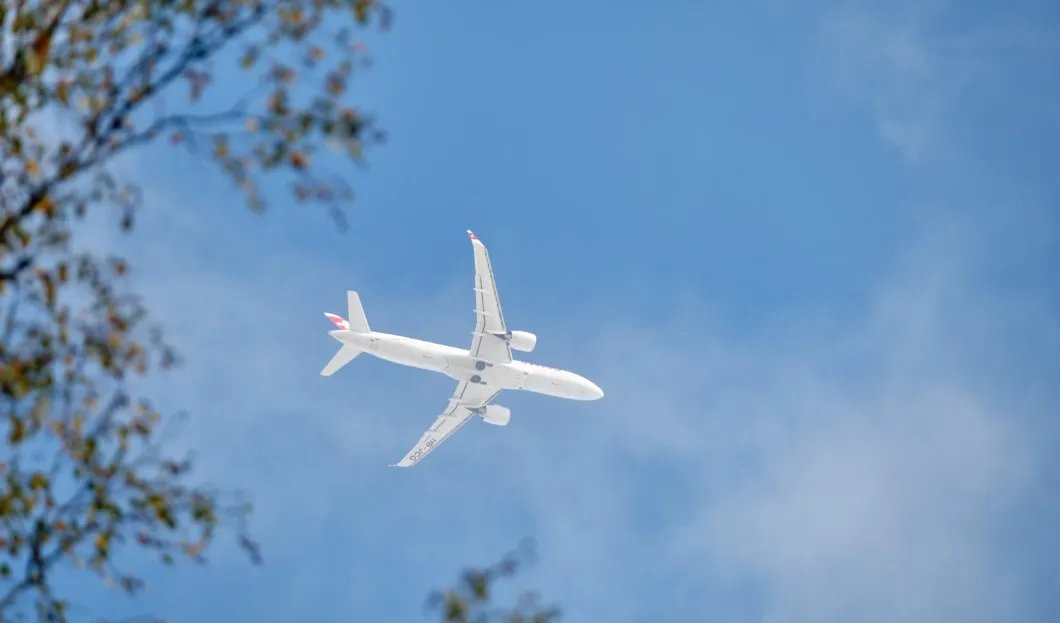
The A220, one of Airbus’ narrow-body planes, is not only cheaper and has fewer seats, but it is also capable of flying as far as the B737 or A320, becoming the ideal aircraft for the post-coronavirus travel.
The story of the Airbus A220 sort of reminisces that of large mammals that conquered the world once the great dinosaurs went extinct. The coronavirus crisis is punishing hard the twin-aisle aircraft, and even more so the large ones such as the A380 and B747; yet the crisis hardly affected the A220, the smallest of the Airbus family.
The A220, previously known as the CSeries, was initially produced by Bombardier from a clean sheet design. In 2018, Airbus became a majority partner of the CSeries Aircraft limited partnership and rebranded the CSeries as the A220 - specifically the A220-100 and the A220-300 - to reflect its major interest in the partnership.
Small and Inexpensive
With an average of 120 to 150 seats, airlines now see these models as the best solution to calm passengers who, out of fear of coronavirus spread, are not particularly excited about flying in large planes next to 300 to 500 other people.
With fewer seats and similar capacity to other single-aisle aircraft, the A220 has established itself as the best option for the post-coronavirus travel. Airlines want planes that have a similar range and economic performance like the larger models, but with fewer seats.
For example, the A220-300 can carry passengers over 6,200 kilometers, as much as the A320, but with 40 to 70 fewer seats. The reduced capacity also makes it lighter, greatly reducing costs for airlines.
Better Resistance to the Crisis
Over the last two weeks, flights have dropped more than 80% over the same period of 2019, so the Airbus A220 features make it resistant against the pandemic. Despite that, half of the A220s have been left on the ground, a higher percentage than Embraer’s A320, B737 and E-Jet.
Delta’s case is a good example: the US airline grounded its 62 Airbus A320, but continues to sell flights on its 31 A220-100 models. Or Swiss, which currently operates 30% of its A320s, but maintains flights on 45% of its 29 A220 planes.
Besides the benefits for airlines, passengers can also enjoy some advantages. Due to the A220 aisle layout with two and three seats, the seats are larger than the average of other companies in the economy class, and the bathrooms and windows are also slightly larger.

Boeing’s Unexpected Crisis
Airbus’ newest family member is proving to be a godsend, and it represents a lead for the recovery of flights thanks to the unexpected crisis of Boeing and its termination of the $4.2 billion deal with Embraer, which would have provided it with the E-jet family, aircraft with a capacity of up to 124 passengers and the direct competitor of the Airbus A220.
“The Airbus A220 is well equipped for the post-coronavirus market. It is a very good plane and a very good air program that arrives just in time for Airbus,” said CEO Guillaume Faury in a virtual meeting with investors.
More A220s to Come
Even though the European manufacturer will maintain a production rate of four units a month, there are still 529 pending orders from airlines (although no new orders have been registered since the COVID-19 crisis began).
Out of these, Air Canada has 14 Airbus A220-300 pending delivery, and JetBlue expects to receive the first of 70 A220-300 by the end of the year (while postponing delivery of 22 A321neo for 2022).
Meanwhile, Latvia’s airBaltic aspires to be the first airline with a fleet completely made up of A220 models. It currently has 22 A220-300 type aircraft and has 28 waiting.










With it's 3+2 seat configuration, even a full 2+2 layout could be envisaged, allowing for seats with individual armrests and transparent plates between seats (to improve the anti-covid protection of passengers) while retaining 80% seat capacity? If transferred to passenger, extra cost would be only ~25%, while keeping an empty seat in 3+3 seat configurations results in 66% seat capacity and ~50% extra cost if transferred to passenger. Given the ETOPS180 qualification of A220, this could be a solution for transatlantic flights connecting NY or Washington to London, Paris or Madrid. Long live the A220!
After Lufthansa, Air France-KLM to announce the end of the operation of the Airbus A380. A decision accelerated by the Covid-19 crisis.
Up to now, five of the Airbus A380s in the current fleet have been owned by Air France or under finance lease, the other four being in an operating lease.